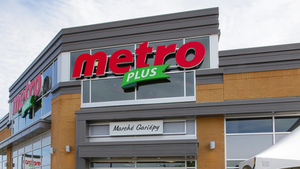SUPERMARKET SHOPPERS COULD MAKE SHOPPING A PLEASURE
Few people with much exposure to food retailing have escaped exposure to the old saw that goes something like this: "The customer is always right, and if you forget that maxim, read it again."Well, there's a lot of truth in that but as those of us who have actually worked in a store know, there are times when it's difficult to believe it. Let's face the truth: There are times when customers are irritating,
October 7, 2002
David Merrefield
Few people with much exposure to food retailing have escaped exposure to the old saw that goes something like this: "The customer is always right, and if you forget that maxim, read it again."
Well, there's a lot of truth in that but as those of us who have actually worked in a store know, there are times when it's difficult to believe it. Let's face the truth: There are times when customers are irritating, arrogant, messy and dishonest. Many store-level workers permit themselves the thought that if customers are always right, why aren't they better behaved and why don't they have some sort of conduct code to follow?
Now there's such a code. The other day, Martin Sloane who writes the weekly syndicated newspaper column called "The Supermarket Shopper" sent me a list of rules of etiquette for supermarket shoppers. The rules were inspired by suggestions sent to him by readers of his column, which deals with supermarket shopping issues.
Here are a few of those rules, the first of which will seem quite familiar.
The first shoppers' rule is to be polite and courteous to other shoppers and to store associates. If you become angered, control your emotions and refer to the first rule.
In the aisles, help with traffic flow by browsing the side of the aisle on which you've parked your cart. Don't browse one side and park on the other. Also, if you encounter a friend, step aside to chat.
Concerning product, handle it carefully. Handle produce as you would want others to handle the produce you purchase. Don't open food packages until you've left the store. Use scoops to pick bulk product. Don't graze on loose product. Put product you decide not to purchase back where you found it.
When joining a checkout lane, observe the limits of express lanes. Also, don't have someone without a cart hold a place in line. If your transaction is likely to take unusually long, say, because you have a lot of coupons, inform others who join the line of that fact. Hand product that you decide not to purchase to the cashier.
As you near the point of payment, unload the entire cart, including the undercarriage. Use a divider for your order, and unload in roughly the order you want it bagged. Position UPC codes so they face the cashier. Don't ask the cashier to bend the rules, such as those concerning purchase limits or check cashing. If there's a legitimate complaint, take it to the front-end manager. Be ready with your form of payment as the time to pay approaches.
If you're shopping with children, remember that the store can be a hazardous place; high displays can be pulled down. Use the seat in the cart, and buckle in the child. Don't let the child stand in the cart or hang on its side. If walking, the child should be instructed to keep a hand on the cart at all times. The child should keep hands off the merchandise, unless permitted to do otherwise.
Clearly, the wheels of food shopping would be well-oiled if these tenets were observed by shoppers. Unfortunately, how to accomplish that is outside the scope of this column.
About the Author
You May Also Like




